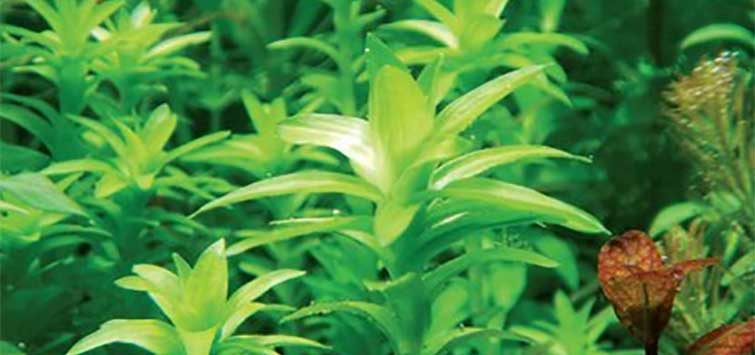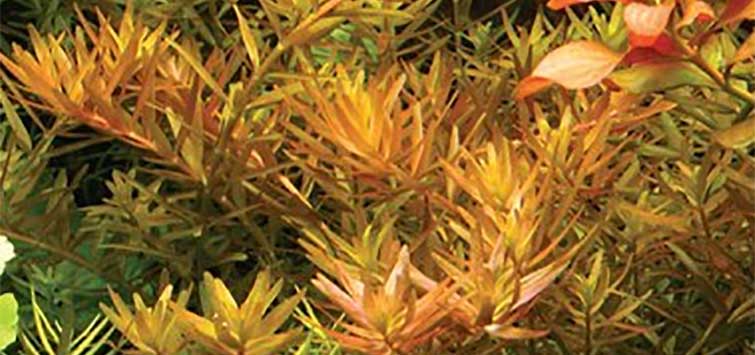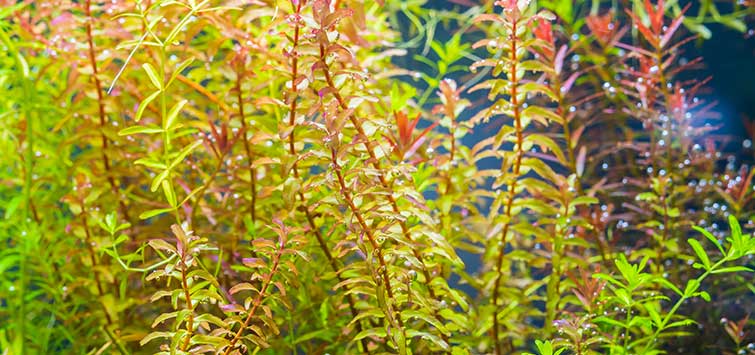Tonina fluviatilis
Tonina fluviatilis
Author: Adam Shappard
Common Names: N/A
Division: Magnoliophyta
Class: Liliopsida
Order: Poales
Family: Eriocaulaceae
Native Distribution: South America and north into Mexico
Aquarium Placement: Midground to background
Requirements: Medium to high light, soft water, water column fertilization, and CO2 addition
PLANT DESCRIPTION
The name fluviatilis refers to being associated with rivers, and in nature Tonina fluviatilis is typically found in shallow water growing as floating mats in slow-moving streams. There are many variants of T. fluviatilis having different-sized leaves, as well as variegated varieties. Several of these are popular in the Asian hobby and can be obtained through other hobbyists and collectors.
Note that there are some plants being circulated as Tonina that are not members of the genus. Tonina is a monotypic genus (only one species) and all variants of T. fluviatilis have the same unmistakable growth appearance and inflorescence. Plants carrying the trade names of “Belem,” “Manaus,” and “Lago Grande” (for example) are likely misnamedSyngonanthus species and differ from Tonina in several ways, with differences in the inflorescence being the most evident.
AQUASCAPING USES
Although not often seen in aquascape competitions, T. fluviatilis can provide a bright-green accent in the mid- to background of a layout, or it could provide a unique and attractive appearance in a large grouping.
T. fluviatilis enjoys soft water; a low KH (4 or less) and low to moderate GH (3 to 8) are prerequisites. The choice of substrate is not overly important because T. fluviatilis is not a strong root feeder, but acidic substrates effectively condition the aquarium and help maintain the general requirement of soft water. Substrates that are known to leach carbonates are not recommended.
Lighting for T. fluviatilis does not need to be intense, but moderate to high light is recommended for best appearance. The growth rate is not particularly rapid, but the upright stems will eventually reach the surface of the water given the chance.
Water column fertilization is beneficial to T. fluviatilis, but beyond soft water, its needs are not particularly difficult to meet. Balanced amounts of nitrogen, potassium, and phosphate should be present. Light fertilization is appropriate, as this species is not a greedy feeder compared to other stem plants. For best appearance and color, micronutrients, including iron, should be available in the water column. CO2 addition is highly recommended for the health and appearance of the stems.
PROPAGATION
Side shoots will appear as the stems mature, and you may snip these off and plant them as short 1- to 3-inch clippings in the substrate. Small clippings will grow out and look best; longer clippings may develop fuzzy water roots or take on a ratty appearance as they grow.
Notes: Due to its upright growth pattern, T. fluviatilis looks nice in a tight grouping of stems staggered by height. The tightest grouping can be achieved by leaving side shoots intact on stems, snipping the tops and replanting them in front. Make sure water flow is adequate and that light is bright enough to reach the bottoms for best health.

.png?h=595&iar=0&w=2781&hash=5FD5E69473BCC22199FBFA2FB71B6033)



